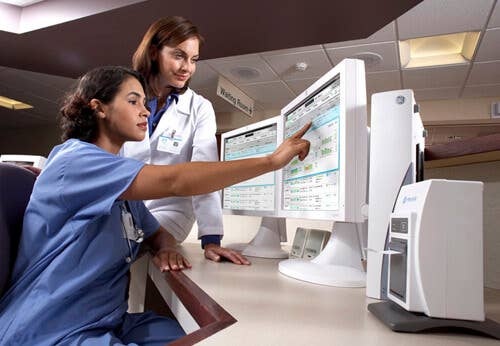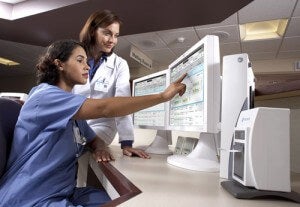New Software To Assist Doctors in Making Decisions

Share

In the traditional world of medical research, it takes many years for techniques and discoveries to transition from the lab to the hospital. With GE's help, that process could happen in the blink of an eye. At the recent Web2.0 Summit, Chairman and CEO of General Electric, Jeff Immelt, announced that they have developed a computer program that can help doctors keep track of patients and suggest treatment options in real time. Data from decades of research would be embedded in the program and could be updated regularly as new medical discoveries are made. The unnamed software will begin its pilot trial at Intermountain this month, and a full version is set to be unveiled in March. Check out a slideshow video from GE Reports after the break.
According to the press release, the new program will enable even the most remote of healthcare facilities to access the cutting edge in medical practices. As a researcher at a major institute, say the Mayo Clinic, completes the final phases of clinical trials and has been given the appropriate regulatory approval, she can then disseminate her results to doctors through the GE system. Instead of hearing about her innovation at a seminar a year (or many years) later, doctors would have the opportunity to use the new research almost immediately. The rapid spread of medical knowledge could revolutionize healthcare, giving patients greater access to new practices, and encouraging new levels of communication in the medical community.
As Dr. Hughes points out in the video above, the GE program is more than just a way to disseminate new information, it is also a method to easily keep track of patients and their needs. Already many doctors carry PDA devices to better record their observations. The GE software would augment those recordings with alerts if test results were out of a healthy range, graphs of important changes in a patient's vital signs, and suggestions for possible treatments. It would almost be like having an administrative assistant and an extra medical expert accompanying your doctor as you are being treated.
Be Part of the Future
Sign up to receive top stories about groundbreaking technologies and visionary thinkers from SingularityHub.


There are certainly a plethora of associated risks and benefits to this new software. Inexperienced medical practitioners, doctors unable to attend regular seminars, professionals tired from endless hours in the hospital - each of these groups could be better suited to saving lives with the help of a program that alerts them to important information. Yet, as the intelligence gathering community has proven in the last decade, reliance on a single point for the exchange of information in a professional society can lead to disastrous cases of 'group-think'. I do trust Intermountain, Mayo Clinic, and other medical institutions involved in producing GE's software, to make sure that the program represents the best and most reliable information available at any given time. Still, I worry that a dangerous treatment that has yet to be proven faulty could spread more easily in this system than with the traditional seminar approach.
Of course, any method of sharing knowledge has to deal with the possibilities of sharing bad data. Also, I'm sure GE and the medical institutions involved in the overview of its new system will work tirelessly to see that the program helps much more than it hinders. If the software proves successful, it hints at the possibility that we will have virtual doctors in the next few decades. Surely not to exclusion of human ones, but if you were a doctor, and had the option of carrying around a council of virtual medical experts in your pocket, wouldn't you take it? Heck, just as a patient, wouldn't you like to have the same available to you in your home? Even ignoring innovations in genetics, stem cells, and biomimetics, healthcare is set to evolve rapidly in the next few years. Anything that can be turned into information technology is heading to the Singularity, folks.
[photo and video credit: GE Reports]
Related Articles

This Week’s Awesome Tech Stories From Around the Web (Through December 20)

Data Centers in Space: Will 2027 Really Be the Year AI Goes to Orbit?

New Gene Drive Stops the Spread of Malaria—Without Killing Any Mosquitoes
What we’re reading